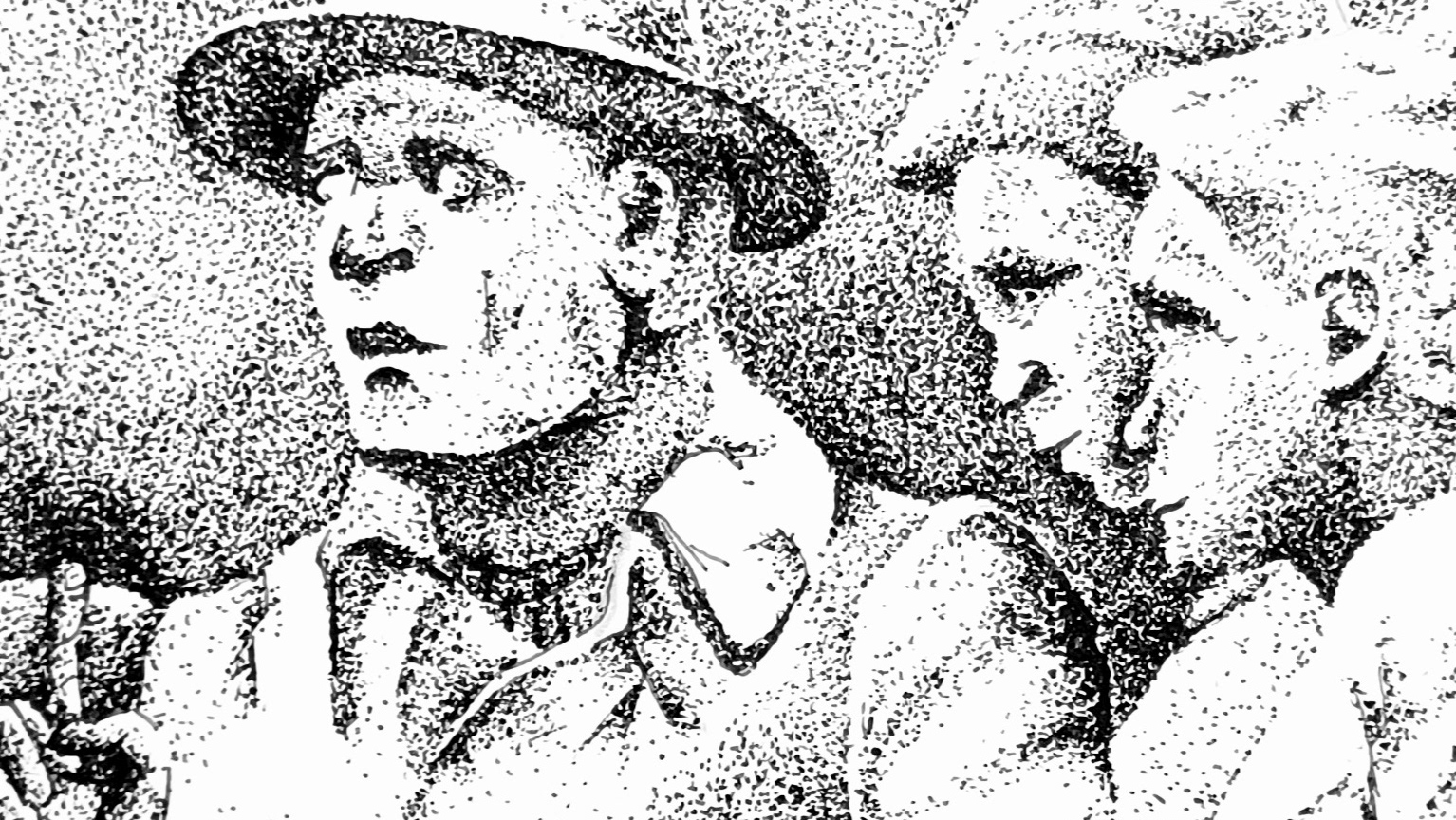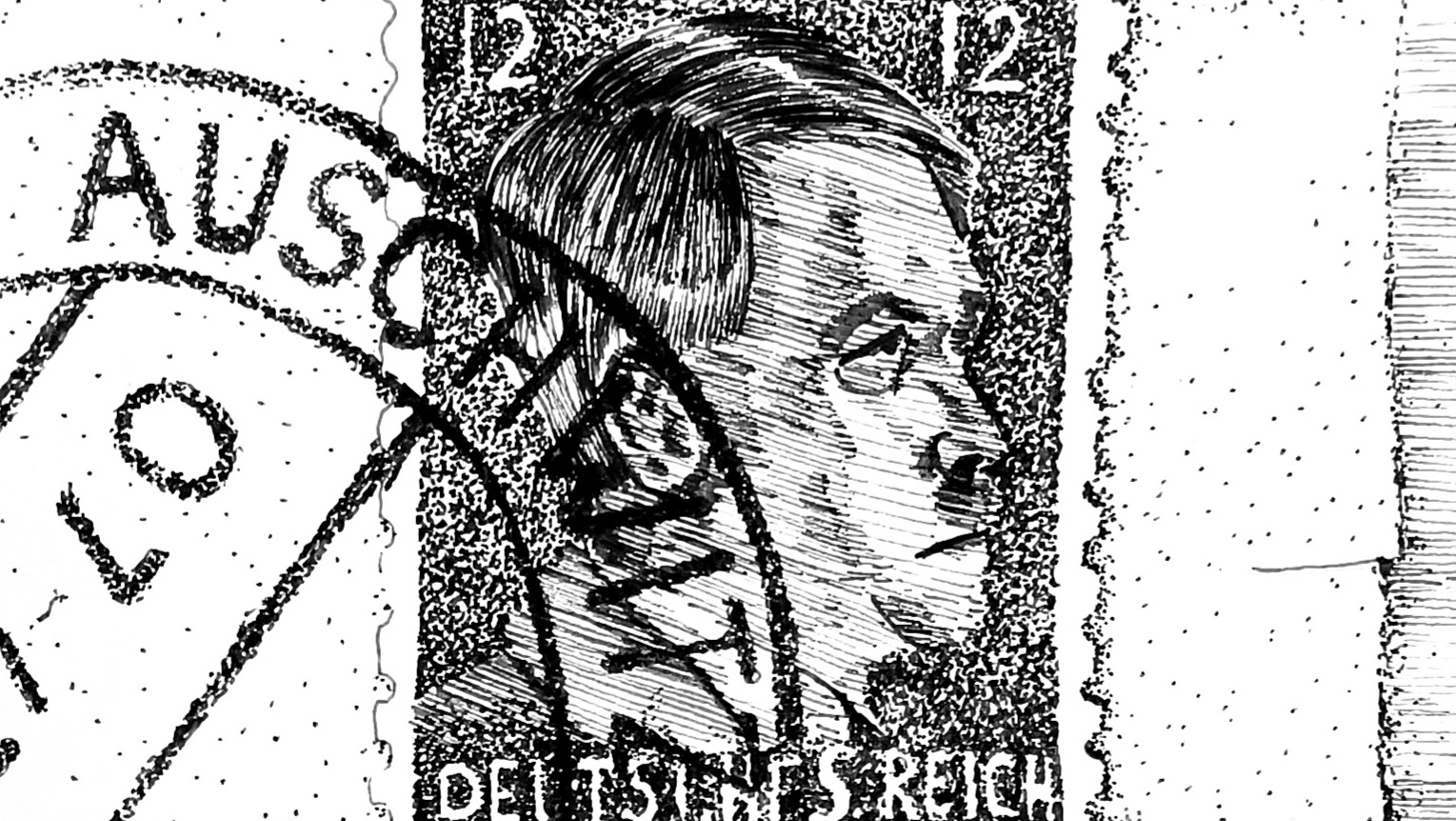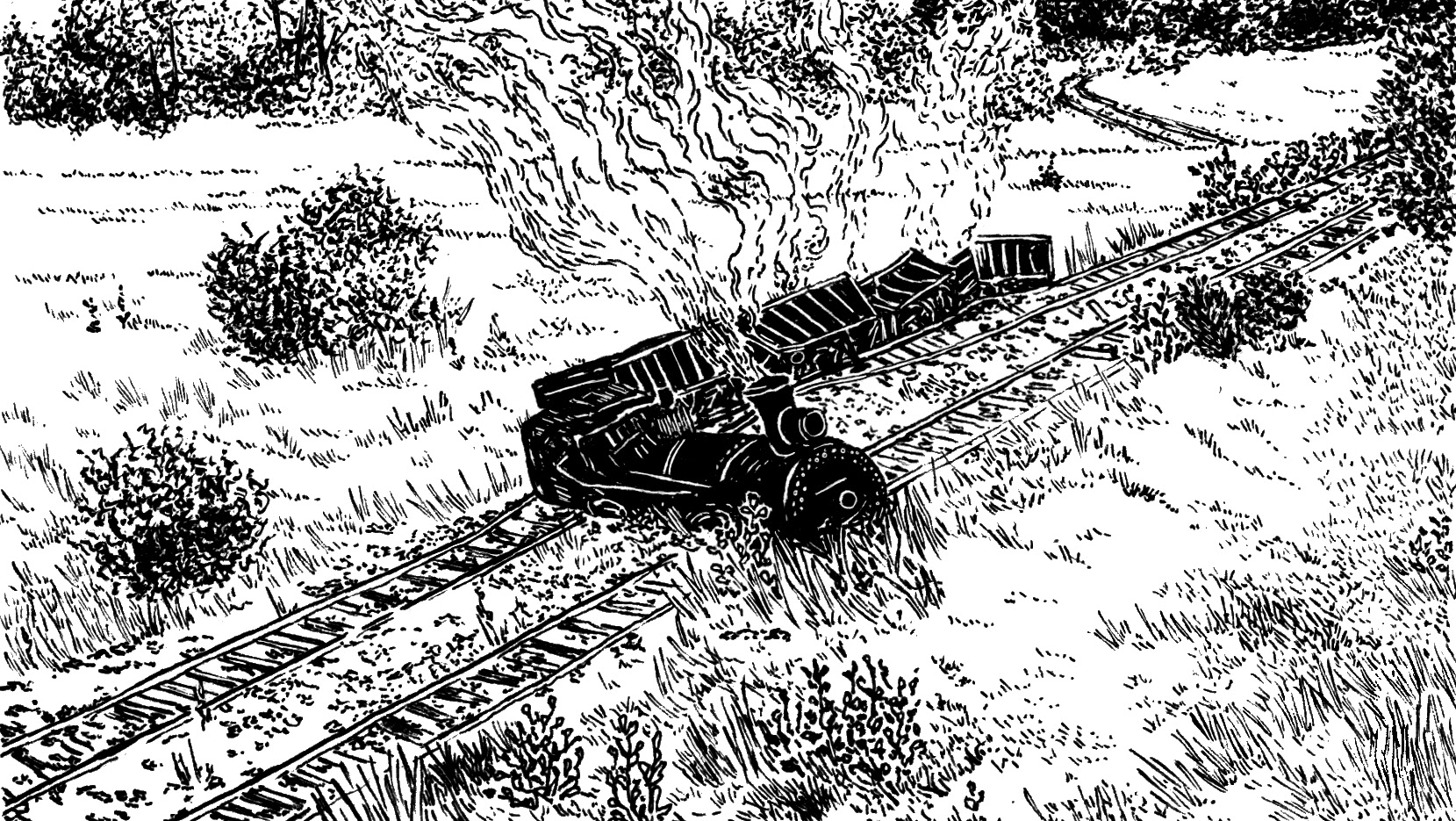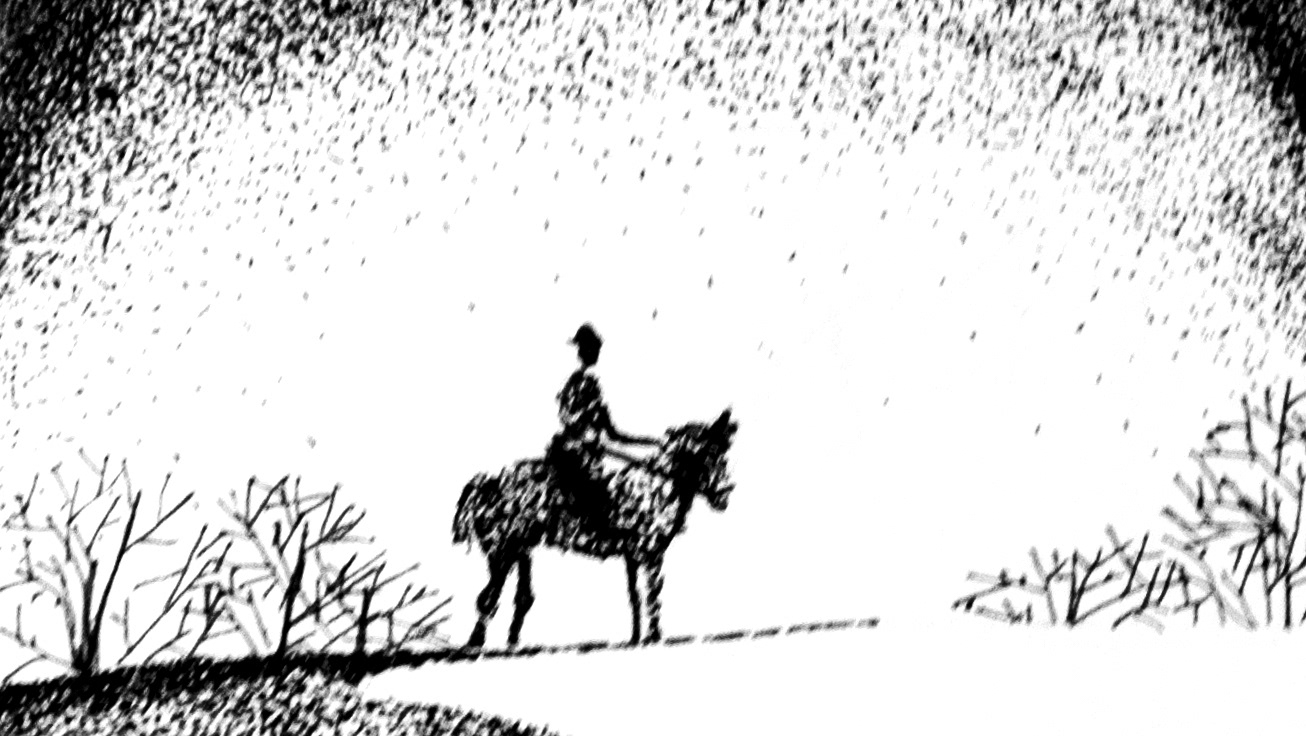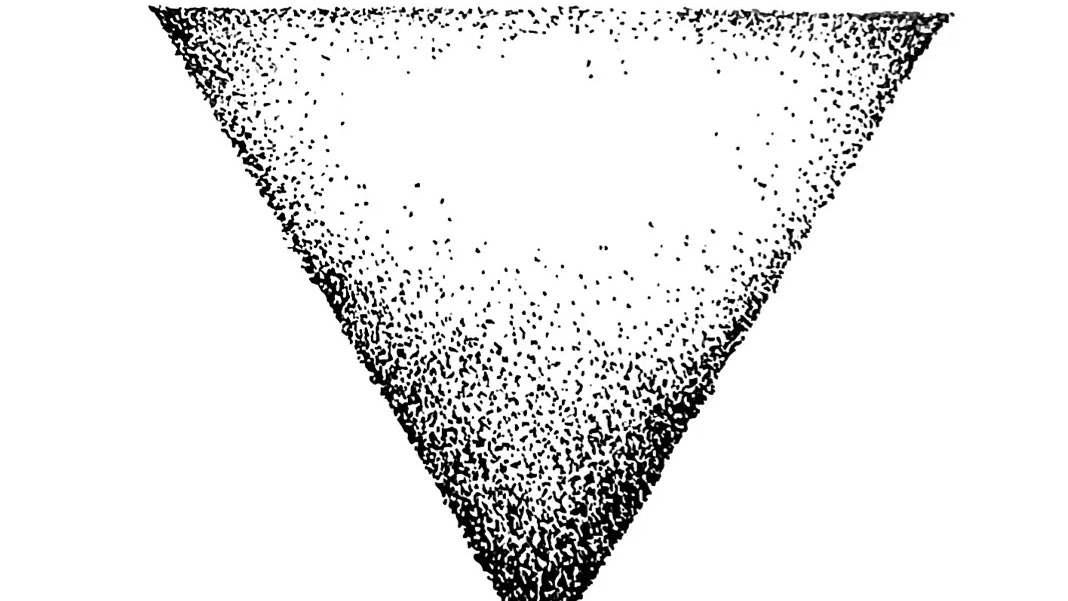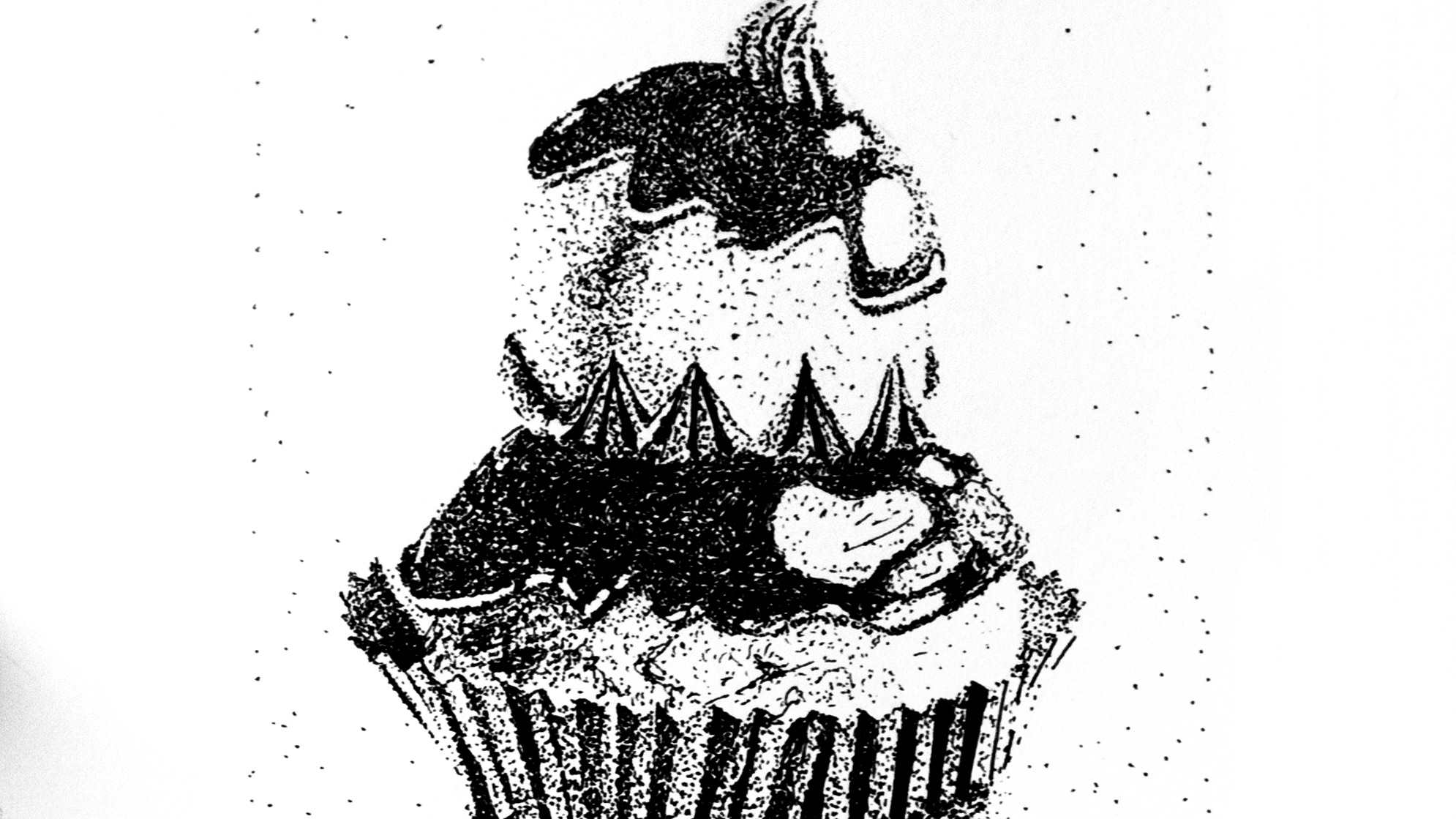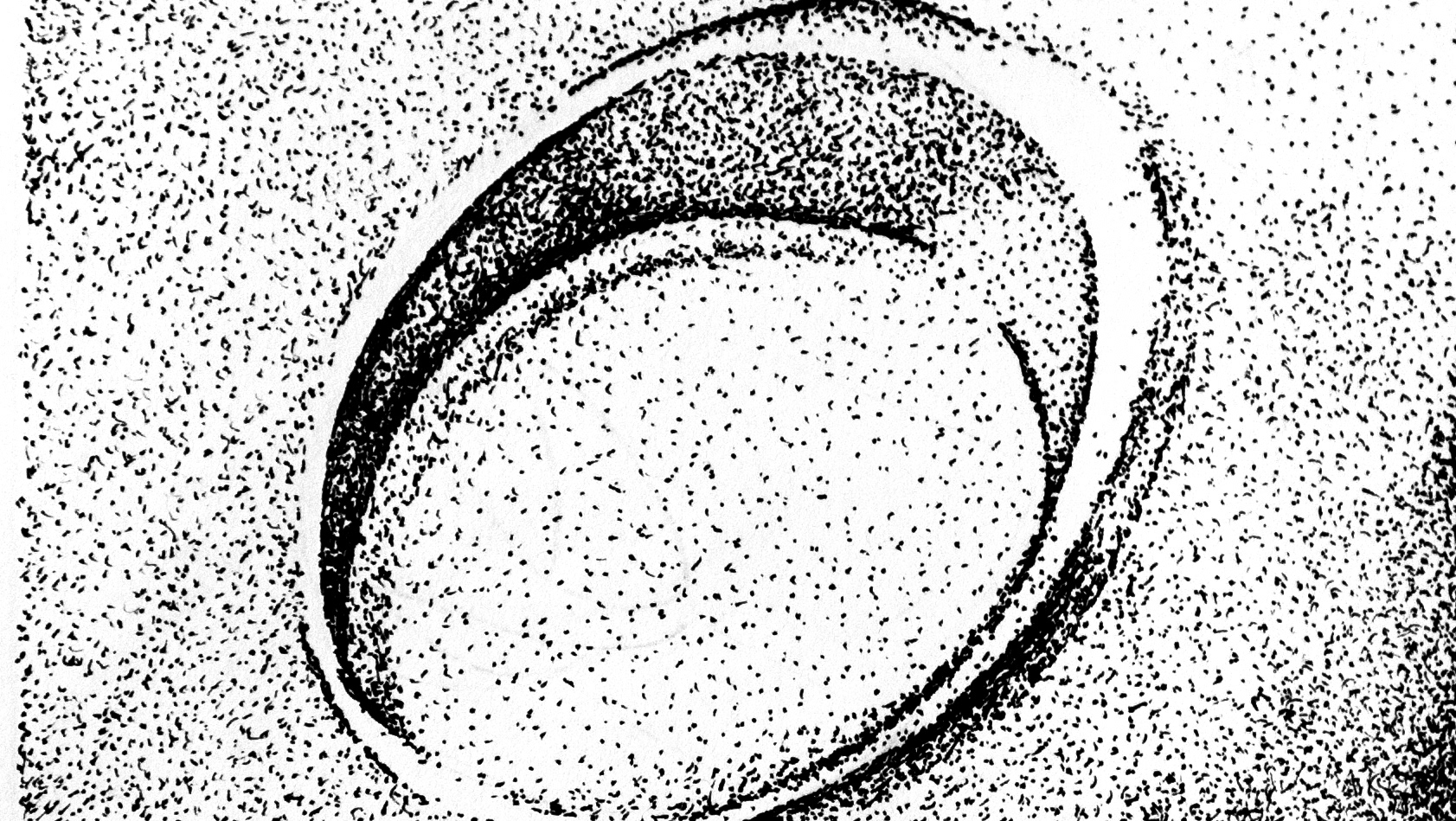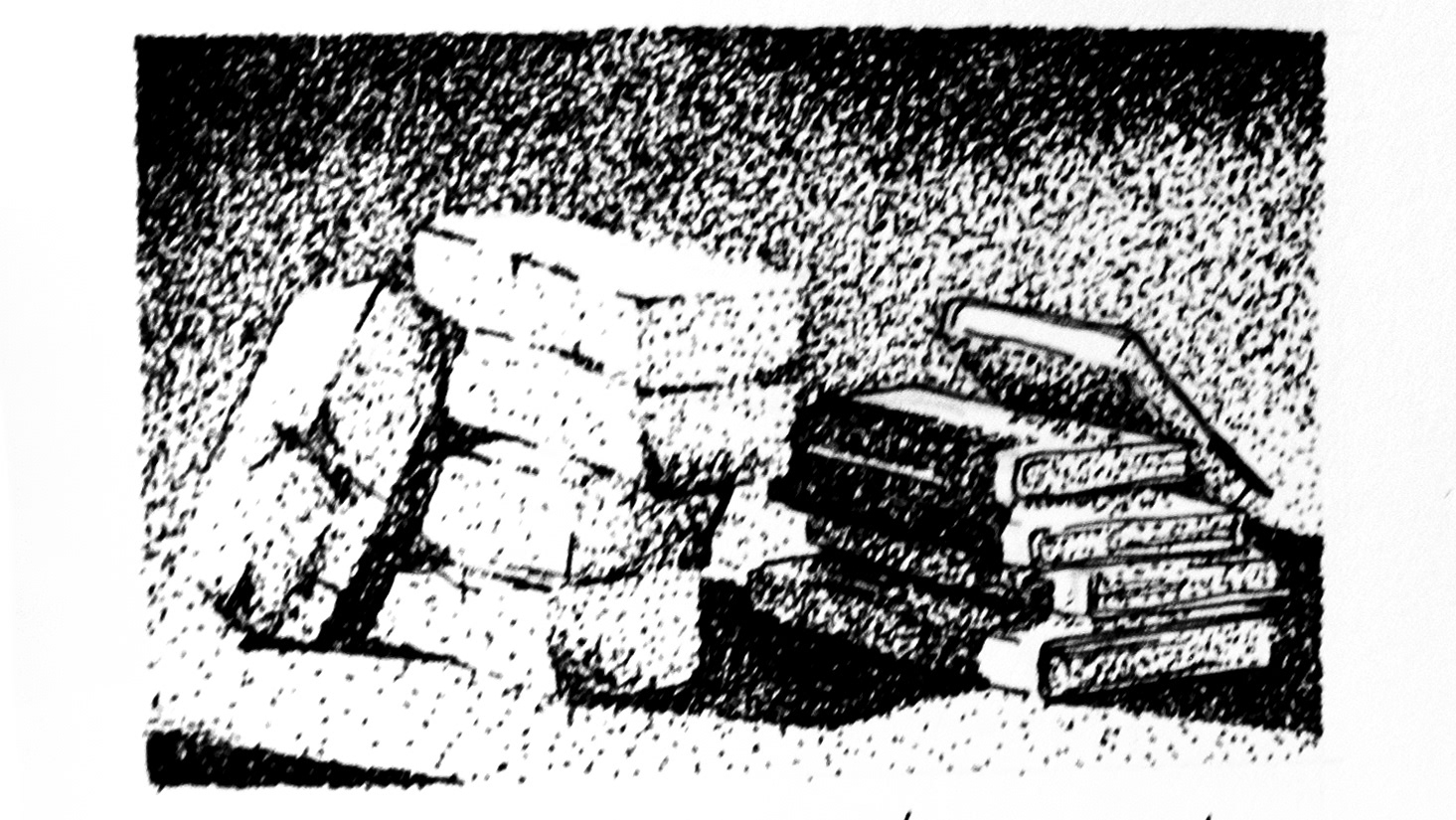kok saghyz
Today is a day in June 1943, and Genevieve isn't sure she can hold much longer.
She survived the first typhus uprising. A day after she woke up from a coma, she had to go back to work, confused, disoriented. She had to go back to work, had she stayed at the revier, she would have been selected to the gas chambers. At the kommandos, the other 31000 helped her stand during the roll calls, they told her where and when to dig. She survived, but for how long?
There is a glimmer of hope, thanks to Marie-Claude Vaillant Couturier, Marie-Elisa Nordmann, Madeleine Dechavassine, and Danielle Casanova.
Back in 1942, Genevieve was a 20 years old woman living in Paris. She worked at a radio shop, while studying in the evening, she wanted to become an accountant or a typist.
A radio is an expensive item, repairing one is expensive as well. The owner of the shop agreed to repair discreetly some radios for free, those which belonged to the resistance. Genevieve agreed to help too, she was the one transporting the heavy objects, hidden in shelves, to the secret resistant apartments. As they were both polish, they only discussed those matters in polish, so no one around them could possibly know. It was one way to resist, helping the resistance, it was enough for Genevieve to be arrested by the Gestapo and sent to Birkenau.
In the camp, Genevieve had the advantage of speaking polish. Just like Marie-Claude Vaillant translated the german orders, Genevieve translated the polish orders for the rest of the 31000. Thanks to her, a lot of beating due to the language barrier was avoided.
But speaking polish doesn't protect you from hard work, from dysentery, malnutrition, thirst, typhus. Danielle's death took a heavy toll on everyone, so did Marie-Claude catching typhus. Who was going to survive if they couldn't? Genevieve, like most of the others, was about to give up.
Danielle Casanova's contribution to the 31000 lived on. Before she died, she heard about a laboratory opening soon. The german wanted to develop researches on a specific plant, the kok-saghyz, extract the latex from it and mass produce cheap rubber, which they were in need for the war industry. Danielle made arrangements so Marie-Claude would have early access to the list of scientists needed for the laboratory.
Marie-Claude survived typhus, and she saw the list. Immediately, she added a few 31000 to the list, Marie-Elisa Nordmann and Madeleine Dechavassine, 2 scientists. In a matter of days, the 2 women had regained colours, this new laboratory was a blessing. And as they proved to be excellent scientists, they could ask for crew to come and help them. They didn't hesitate and brought everyone they could, Charlotte Delbo, Cecile Charrua, Germaine Pican, Lulu and Carmen. And Genevieve too.
Back to the present, Genevieve starts her first day to Raisko. The roll call before reaching Raisko is already shorter, it is a good surprise. Raisko is 3 kilometers away from Birkenau, a schoolhouse transformed into a laboratory, with a few buildings around and a farm. The work is so much easier, nowhere near as tiring as the swamp or construction kommandos. The man who runs the laboratory, Caesar, is obsessed with contagion so he orders the women to be clean and healthy. For the first time in 4 months, the women wash, they eat properly, they can hardly believe it.
And now, Genevieve and the others are told they will be moving to Raisko, into a new barrack. No more block 26. No roll calls, a bed for every person, clean sheets, new clothes, new shoes. No beating either, just a guard opening the door of the barrack and asking to wake up. The food is better, there are even hot showers. This is incredible, the 31000 are already starting to gain more energy.
On top of that, Eugene Garnier managed to keep a place at the garden kommando, where he can go to Raisko, grow vegetables, sell them to the Ss and their families, and steal some too. This is a new bridge between the 45000 and the 31000, they can communicate easily, exchange help.
This is paradise, says Geneviève. She speaks polish, this is literally what Raisko means in polish.
Paradise.
Notes
Thank you for listening to this episode of 31000/45000, the story of 2 trains of french members of the resistance. My name is Matthieu Landour Engel.
This episode was about Genevieve Pakula and the return of hope among the 31000.
The first months were devastating for the 31000, and the majority of them passed away. The death of Danielle Casanova was a terrifying blow as she seemed the most likely to survive Birkenau. yet Danielle Casanova’s influence lived on as, even dead, she had managed to place some 31000 in Raisko.
Let me give you a few informations about Raisko, As I mentioned before, the Auschwitz complex was far bigger than Auschwitz itself, there was also Birkenau, Monowitz, and also many other sub camps. One of those sub camps was Raisko, originally a polish village. The residents of Raisko were expelled, the same fate happened in many villages surrounding Auschwitz. Some buildings were demolished and levelled and five buildings were kept. There were around 250 and 300 people living in 2 buildings, the life conditions were far superior than in Birkenau, the prisoners could wash themselves, their clothes, they had their own beds, those were very different life conditions.
The gardening kommando was close to the women’s barracks, and 45000 men like Eugene Garnier worked there, easing the communication between the 31000 and the 45000. Marie-Elisa Nordmann talks very fondly of Eugene and the help he provided.
Danielle Casanova made sure marie-Claude Vaillant Couturier had an early access to the prisoner's list to Raisko, and Marie-Claude put Marie Elisa Nordmann and Madeleine Dechavassine.
I will talk about Marie-Claude Vaillant Couturier further in another episode, but let me give you more informations about Marie-Elisa Nordmann and Madeleine Dechavassine, 2 extraordinary women.
Marie -Elisa Nordmann was a renowned french chemist and member of the resistance. She was part of the same group than Danielle Casanova, the Politzers and Picans yet was caught later on, on another investigation. In Birkenau, she learnt that her mother had been deported a few months before her to Auschwitz, as a french jewish, and she had been sent right away to the gas chambers and was murdered. Her knowledge of chemistry and the quick reaction of Marie-Claude Vaillant Couturier made her part of the Raisko team, where she managed to enlist a few more 31000. She survived the war.
Madeleine Dechavassine was a chemist as well, resistant, she helped preparing explosives. She was known to the police as Saint Michel, as the police didn’t know her name, they only knew she met other members of the resistance at the Saint Michel station. She avoided arrestation a few times but she was arrested during the Tintelin investigation. If you wish to know more about the Tintelin investigation, I explained it further on the episode about Yvonne Picard. She was part of the Raisko team and with Marie-Elisa, they managed to place a few more 31000. Madeleine Dechavassine survived the war.
Genevieve Pakula survived and is an incredible woman. Here is an interview of her.
My sources for this story mostly come from the book le convoi du 24 janvier by Charlotte Delbo, A train in winter by Caroline Moorehead. My sources also are red triangles in Auschwitz, by Claudine Cardon Hamet, the website deportes-politiques-auschwitz.fr, memoire vive, the foundation for the memory of deportation website , the Maitron website, and the fantastic website auschwitz.org .
Thank you very much for listening, the next episode will be about Louis Eudier and the letters to France.
TRADUCTION FRANCAISE
Aujourd'hui nous sommes un jour de juin 1943, et Geneviève est à bout.
Elle a survécu à la grande vague du typhus. Un jour seulement après sa sortie du coma, elle a dû se lever et repartir au travail, confuse, désorientée. Si elle était restée au revier, elle aurait sûrement été sélectionnée pour les chambres à gaz. Dans son kommando, d’autres 31000 l'aident à tenir debout pendant l'appel, elles lui indiquent où et quand creuser pour donner l’impression aux gardes de travailler. Elle tient le coup, mais ca ne durera pas longtemps.
Une lueur d'espoir apparaît, grâce à Marie-Claude Vaillant Couturier, Marie-Elisa Nordmann, Madeleine Dechavassine, et Danielle Casanova.
De retour en 1942, Genevieve etait une jeune femme de 20 ans, a PAris. Elle travaillait dans une boutique de réparation de radios, tout en poursuivant des études le soir, avec l’objectif de travailler comme comptable ou dactylographe.. Elle espérait
Une radio coûte cher, une réparation est coûteuse aussi. Le patron de la boutique acceptait parfois de réparer des équipements gratuitement, il le faisait aussi pour les membres de la résistance. Geneviève aussi acceptait d’aider, c'était elle qui transportait les radios, discrètement, cachées dans des meubles, jusqu’aux appartements de certains membres. Tous deux polonais, ils ‘abordaient jamais le sujet autrement que dans leur langue maternelle, cela empechait les autres employes d’etre au courant de quoi que ce soit. C'était la façon à Geneviève de résister, en apportant un soutien logistique, c'était aussi hélas la raison de sa déportation.
A birkenau, Genevieve avait l’avantage de parler polonais. Tout comme MAie-Clade traduisait les ordres en allemand, Genevieve traduisait le polonais aux 31000. Grâce à elle, beaucoup de coups dus à la barrière de la langue ont pu être évités.
Mais parler le poloanais ne protégeait pas du travail harassant, de la dysenterie, de la faim, du typhus. Le décès de Danielle Casanova a été un coup dur pour toutes, ainsi que le typhus de Marie-Claude, Qui pouvait survivre si elles ne le pouvaient pas? Geneviève, comme beaucoup d’autres, était sur le point d’abandonner.
La contribution de Danielle Casanova continuait, même après sa disparition. Peu avant son décès, elle entendait parler de l’ouverture prochaine d’un laboratoire. Les allemands souhaitaient développer une plante, le kok-saghyz, en extraire le latex pour produire du caoutchouc à bas coût pour l’industrie des armes. Danielle s’arrangeait alors pour que Marie-Claude ait un accès en avance à la liste des scientifiques requis pour le laboratoire.
Marie-Claude survivait au typhus, elle accède à cette liste. Immédiatement, elle rajoutait des 31000 a cette liste Marie-Elisa Nordmann et Madeleine Dechavassine, 2 scientifiques. En quelques jours seulement, elles reprenaient des forces, ce laboratoire est une chance. Et comme elles étaient très qualifiées, elles étaient vite autorisées à monter leur propre équipe. Elles n'hésitaient pas et faisaient venir toutes celles qu'elles pouvaient, Charlotte Delbo, Cecile Charrua, Germaine Pican, Lulu et Carmen. Et Genevieve aussi.
De retour au présent, Geneviève démarre son premier jour à Raisko. L’appel avant de partir pour raisko est plus court, c’est une bonne surprise. Raisko se trouve à 3 kilomètres de Birkenau, une ancienne école reconvertie en laboratoire, avec quelques bâtiments autour et une ferme. le travail y est bien plus aisem rien à voir avec le kommando des marais ou les kommando de construction. L’homme en charge du laboratoire, Caesar, est obsédé par les contagions alors il ordonne aux femmes d'être propres et en bonne santé. Pour la première fois en 4 mois, les femmes peuvent se doucher, manger à leur faim, elles ont du mal à le croire.
Et maintenant, Genevieve et les autres apprennent qu’elles vont être déplacées entièrement à raisko. Plus de block 26, plus d'appels, un lit pour chacune, des draps propres, de nouveaux vêtements et chaussures. Plus de coups non plus, juste un garde qui ouvre la porte de leur pièce et leur dit de se lever, La nourriture est meilleure, il y a des douches chaudes, c'est incroyable, les 31000 reprennent des couleurs.
Et par-dessus, Eugene Garnier est parvenu à trouver une place au kommando des jardins, ou il peut se déplacer à Raisko, cultiver des légumes, les vendre aux SS et leurs familles, et en subtiliser quand il peut. Un nouveau pont va se créer entre les 31000 et les 45000, ils vont pouvoir communiquer plus aisément, s'aider.
C’est le paradis, se dit Geneviève. Elle parle polonais, c’est litteralement ce que Raisko signifie en polonais.
Le paradis.
Notes
Thank you for listening to this episode of 31000/45000, the story of 2 trains of french members of the resistance. My name is Matthieu Landour Engel.
This episode was about Genevieve Pakula and the return of hope among the 31000.
The first months were devastating for the 31000, and the majority of them passed away. The death of Danielle Casanova was a terrifying blow as she seemed the most likely to survive Birkenau. yet Danielle Casanova’s influence lived on as, even dead, she had managed to place some 31000 in Raisko.
Let me give you a few informations about Raisko, As I mentioned before, the Auschwitz complex was far bigger than Auschwitz itself, there was also Birkenau, Monowitz, and also many other sub camps. One of those sub camps was Raisko, originally a polish village. The residents of Raisko were expelled, the same fate happened in many villages surrounding Auschwitz. Some buildings were demolished and levelled and five buildings were kept. There were around 250 and 300 people living in 2 buildings, the life conditions were far superior than in Birkenau, the prisoners could wash themselves, their clothes, they had their own beds, those were very different life conditions.
The gardening kommando was close to the women’s barracks, and 45000 men like Eugene Garnier worked there, easing the communication between the 31000 and the 45000. Marie-Elisa Nordmann talks very fondly of Eugene and the help he provided.
Danielle Casanova made sure marie-Claude Vaillant Couturier had an early access to the prisoner's list to Raisko, and Marie-Claude put Marie Elisa Nordmann and Madeleine Dechavassine.
I will talk about Marie-Claude Vaillant Couturier further in another episode, but let me give you more informations about Marie-Elisa Nordmann and Madeleine Dechavassine, 2 extraordinary women.
Marie -Elisa Nordmann was a renowned french chemist and member of the resistance. She was part of the same group than Danielle Casanova, the Politzers and Picans yet was caught later on, on another investigation. In Birkenau, she learnt that her mother had been deported a few months before her to Auschwitz, as a french jewish, and she had been sent right away to the gas chambers and was murdered. Her knowledge of chemistry and the quick reaction of Marie-Claude Vaillant Couturier made her part of the Raisko team, where she managed to enlist a few more 31000. She survived the war.
Madeleine Dechavassine was a chemist as well, resistant, she helped preparing explosives. She was known to the police as Saint Michel, as the police didn’t know her name, they only knew she met other members of the resistance at the Saint Michel station. She avoided arrestation a few times but she was arrested during the Tintelin investigation. If you wish to know more about the Tintelin investigation, I explained it further on the episode about Yvonne Picard. She was part of the Raisko team and with Marie-Elisa, they managed to place a few more 31000. Madeleine Dechavassine survived the war.
Genevieve Pakula survived and is an incredible woman. Here is an interview of her.
My sources for this story mostly come from the book le convoi du 24 janvier by Charlotte Delbo, A train in winter by Caroline Moorehead. My sources also are red triangles in Auschwitz, by Claudine Cardon Hamet, the website deportes-politiques-auschwitz.fr, memoire vive, the foundation for the memory of deportation website , the Maitron website, and the fantastic website auschwitz.org .
Thank you very much for listening, the next episode will be about Louis Eudier and the letters to France.
